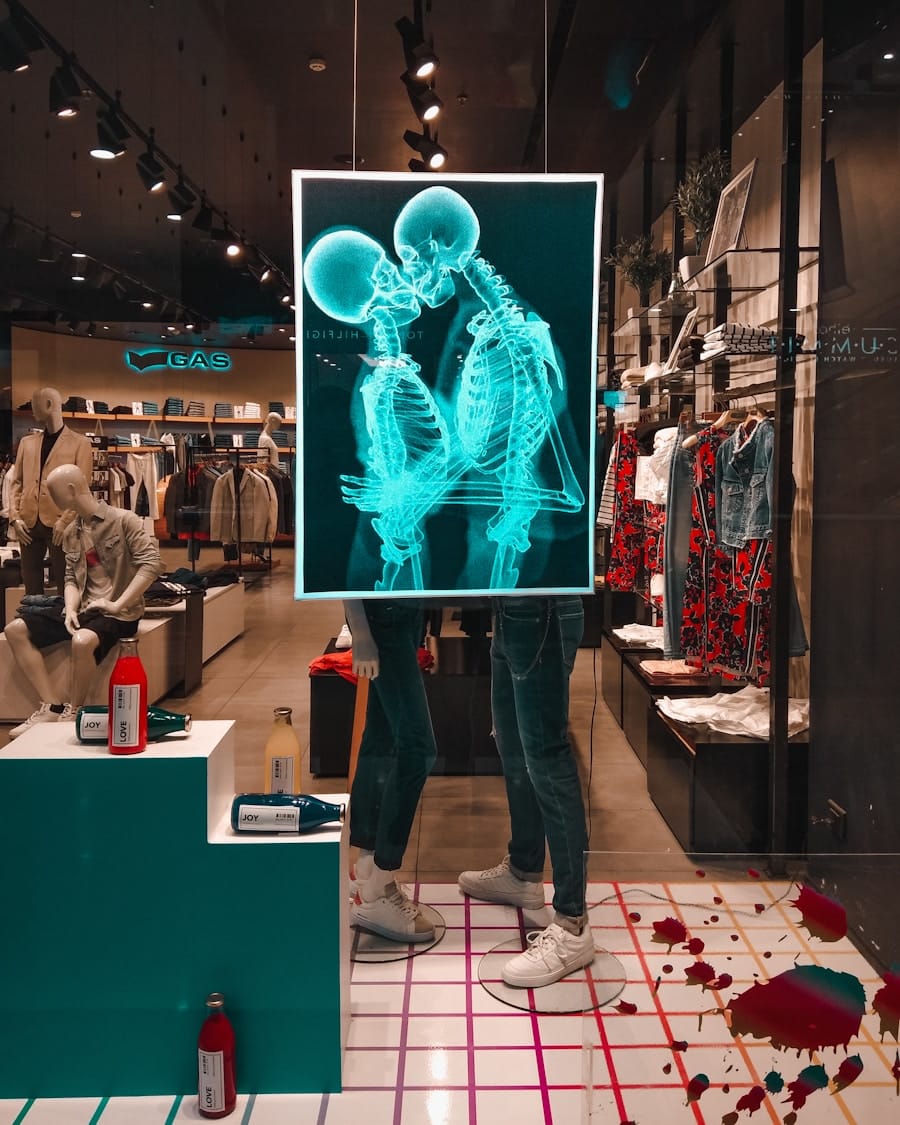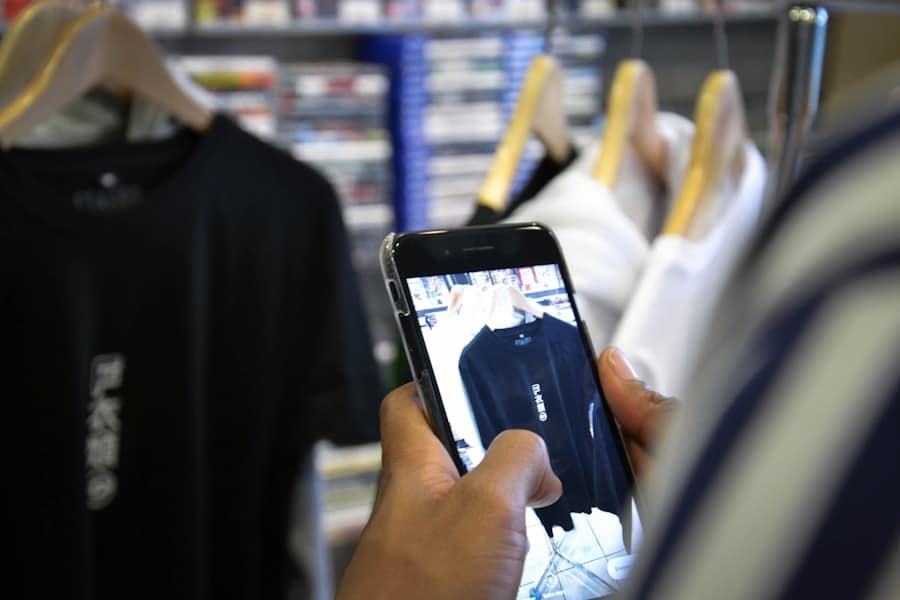Augmented Reality (AR) has emerged as a transformative technology in the retail sector, reshaping how consumers interact with products and brands. By overlaying digital information onto the physical world, AR creates immersive experiences that enhance the shopping journey. This technology allows retailers to bridge the gap between online and offline shopping, providing customers with interactive and engaging ways to visualize products before making a purchase.
As consumers increasingly seek personalized and convenient shopping experiences, AR stands out as a powerful tool that can meet these demands. The integration of AR in retail is not merely a trend; it represents a fundamental shift in how businesses approach customer engagement. Retailers are leveraging AR to create unique experiences that captivate consumers, allowing them to visualize products in their own environments.
For instance, furniture retailers can enable customers to see how a sofa would look in their living room through their smartphones. This capability not only enhances customer satisfaction but also reduces the likelihood of returns, as consumers can make more informed decisions. As AR technology continues to evolve, its potential applications in retail are expanding, promising even more innovative solutions for both retailers and consumers.
Key Takeaways
- AR in retail is revolutionizing the way consumers shop by providing immersive and interactive experiences.
- Virtual product testing through AR offers benefits such as increased customer engagement, reduced return rates, and improved decision-making for shoppers.
- AR is changing the shopping experience by allowing customers to visualize products in their own space, try on virtual clothing, and receive personalized recommendations.
- The future of AR in retail looks promising, with advancements in technology leading to more seamless and realistic experiences for consumers.
- Successful examples of AR integration in retail include virtual fitting rooms, interactive product displays, and AR-powered navigation tools.
The Benefits of Virtual Product Testing
Enhancing the Shopping Experience
One of the most significant advantages of AR in retail is the ability to conduct virtual product testing. This feature allows customers to interact with products in a simulated environment, providing them with a realistic sense of how items will fit into their lives. For example, beauty brands have adopted AR to allow customers to virtually try on makeup products before purchasing.
Empowering Confident Purchasing Decisions
By using facial recognition technology, these applications can accurately apply different shades of lipstick or eyeshadow on a user’s image, enabling them to experiment with various looks without any physical application. Virtual product testing not only enhances the shopping experience but also empowers consumers to make confident purchasing decisions. When customers can visualize how a product will look or function in their own space, they are more likely to feel satisfied with their choices.
Driving Customer Loyalty and Reducing Returns
This leads to increased customer loyalty and repeat business, as consumers appreciate the convenience and personalization that AR offers. Furthermore, retailers benefit from reduced return rates, as customers are less likely to be disappointed with their purchases when they have had the opportunity to test products virtually.
How AR is Changing the Shopping Experience

The shopping experience is undergoing a significant transformation due to the integration of AR technology. Traditional retail environments are being enhanced with digital overlays that provide additional information and interactivity. For instance, in-store displays can be augmented with QR codes that, when scanned, reveal detailed product information, customer reviews, or even promotional offers.
This not only enriches the shopping experience but also encourages consumers to engage more deeply with the products on display. Moreover, AR is facilitating a more personalized shopping journey. Retailers can use data analytics to tailor AR experiences based on individual consumer preferences and behaviors.
For example, a clothing retailer might offer an AR fitting room experience where customers can see how different outfits look on them without trying them on physically. This level of personalization not only makes shopping more enjoyable but also fosters a sense of connection between the consumer and the brand. As shoppers increasingly seek unique and tailored experiences, AR provides retailers with the tools to meet these expectations effectively.
The Future of AR in Retail
Looking ahead, the future of AR in retail appears promising and full of potential. As technology continues to advance, we can expect even more sophisticated applications of AR that will further enhance the shopping experience. One area poised for growth is the integration of artificial intelligence (AI) with AR technology.
By combining these two powerful tools, retailers can create hyper-personalized shopping experiences that adapt in real-time to consumer preferences and behaviors. Additionally, advancements in hardware, such as smart glasses and wearable devices, will likely play a crucial role in the evolution of AR in retail. These devices could enable hands-free interactions with products and provide seamless access to information while consumers shop.
Imagine walking through a store while wearing smart glasses that highlight promotions or suggest complementary products based on your previous purchases. Such innovations could revolutionize how consumers shop, making it more intuitive and engaging than ever before.
Examples of Successful AR Integration in Retail
Several retailers have successfully integrated AR into their operations, showcasing its potential to enhance customer engagement and drive sales. One notable example is IKEA’s “IKEA Place” app, which allows users to visualize how furniture items will look in their homes using AR technology. Customers can select furniture pieces from the app’s catalog and place them virtually in their living spaces, adjusting sizes and orientations as needed.
This innovative approach has not only improved customer satisfaction but has also led to increased sales conversions. Another compelling case is Sephora’s Virtual Artist feature, which enables customers to try on makeup virtually using their smartphones or in-store kiosks. By leveraging facial recognition technology, Sephora allows users to experiment with different makeup looks without any physical application.
This interactive experience has proven particularly effective in attracting younger consumers who value technology-driven shopping experiences. Such successful implementations highlight how AR can create memorable interactions that resonate with customers and drive brand loyalty.
Overcoming Challenges in Implementing AR in Retail

Despite its numerous benefits, implementing AR technology in retail is not without challenges.
Retailers must invest in high-quality content creation, software development, and ongoing updates to ensure that their AR experiences remain relevant and engaging.
Additionally, there is the challenge of ensuring that AR experiences are user-friendly and accessible to all consumers. Retailers must consider varying levels of technological proficiency among their customer base when designing AR applications.
If an AR experience is too complex or requires extensive technical knowledge, it may deter potential users from engaging with it altogether. Therefore, retailers must prioritize simplicity and ease of use in their AR implementations to maximize consumer adoption.
The Impact of AR on Consumer Behavior
The introduction of AR technology has significantly influenced consumer behavior in retail settings. Research indicates that consumers who engage with AR experiences are more likely to make purchases compared to those who do not. The immersive nature of AR allows shoppers to visualize products more effectively, leading to increased confidence in their buying decisions.
This heightened engagement often translates into higher conversion rates for retailers. Moreover, AR has been shown to enhance brand perception among consumers. When retailers invest in innovative technologies like AR, they signal to customers that they are forward-thinking and committed to providing exceptional shopping experiences.
This positive association can lead to increased brand loyalty and advocacy as consumers share their unique experiences with friends and family. As word-of-mouth marketing remains a powerful tool in retail, the impact of AR on consumer behavior extends beyond individual transactions; it fosters long-term relationships between brands and their customers.
Tips for Retailers Looking to Implement AR Technology
For retailers considering the implementation of AR technology, several key strategies can help ensure success. First and foremost, it is essential to understand the target audience and tailor AR experiences accordingly. Conducting market research can provide valuable insights into consumer preferences and behaviors, allowing retailers to design engaging experiences that resonate with their customers.
Additionally, retailers should prioritize collaboration with experienced technology partners who specialize in AR development. These partnerships can help streamline the implementation process and ensure that the final product meets industry standards for quality and usability. Furthermore, retailers should consider starting small by piloting AR initiatives before rolling them out on a larger scale.
This approach allows for testing and refinement based on real-world feedback, ultimately leading to more successful implementations. Finally, ongoing evaluation and adaptation are crucial for maintaining the relevance of AR experiences over time. Retailers should regularly assess user engagement metrics and gather customer feedback to identify areas for improvement.
By staying attuned to consumer needs and technological advancements, retailers can continue to leverage AR effectively as part of their overall strategy for enhancing customer engagement and driving sales growth.
In addition to revolutionizing retail through virtual product testing, augmented reality (AR) is also making waves in the world of logo design. Companies are now utilizing AR software to create stunning and interactive logos that truly stand out. To learn more about the best software for logo design available today, check out this article.
FAQs
What is AR?
AR stands for Augmented Reality, which is a technology that superimposes a computer-generated image on a user’s view of the real world, thus providing a composite view.
How is AR revolutionizing retail?
AR is revolutionizing retail by enabling virtual product testing, allowing customers to visualize and interact with products in a virtual space before making a purchase.
What are the benefits of AR in retail?
Some benefits of AR in retail include enhanced customer experience, increased engagement, reduced product returns, and the ability to offer personalized product recommendations.
How does AR enable virtual product testing?
AR enables virtual product testing by overlaying digital images of products onto the real world through a smartphone or AR glasses, allowing customers to see how products would look and fit in their physical space.
What are some examples of AR in retail?
Examples of AR in retail include virtual try-on for clothing and accessories, virtual furniture placement, and interactive product demonstrations.

